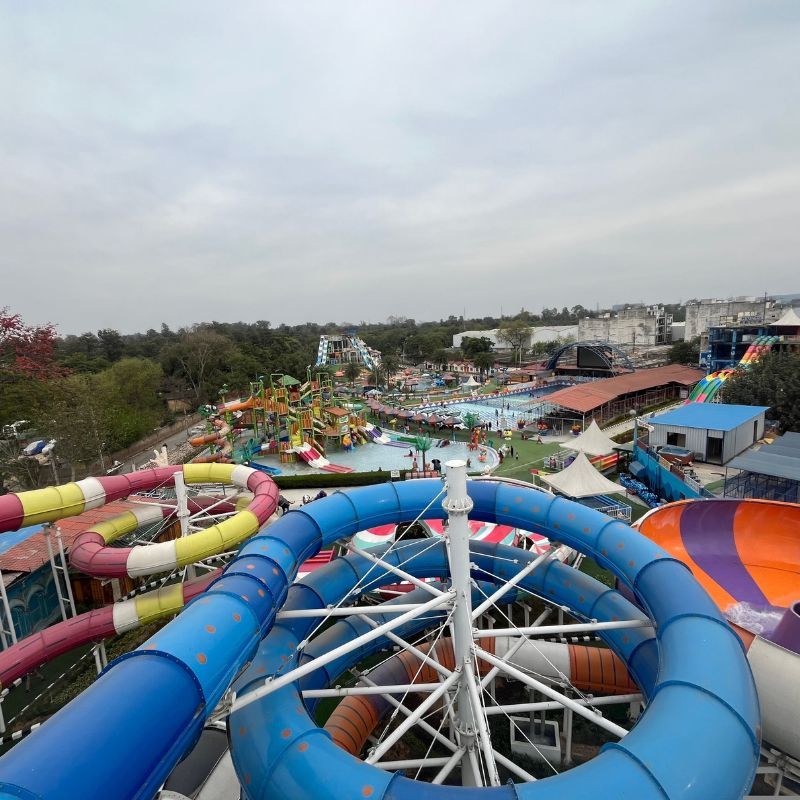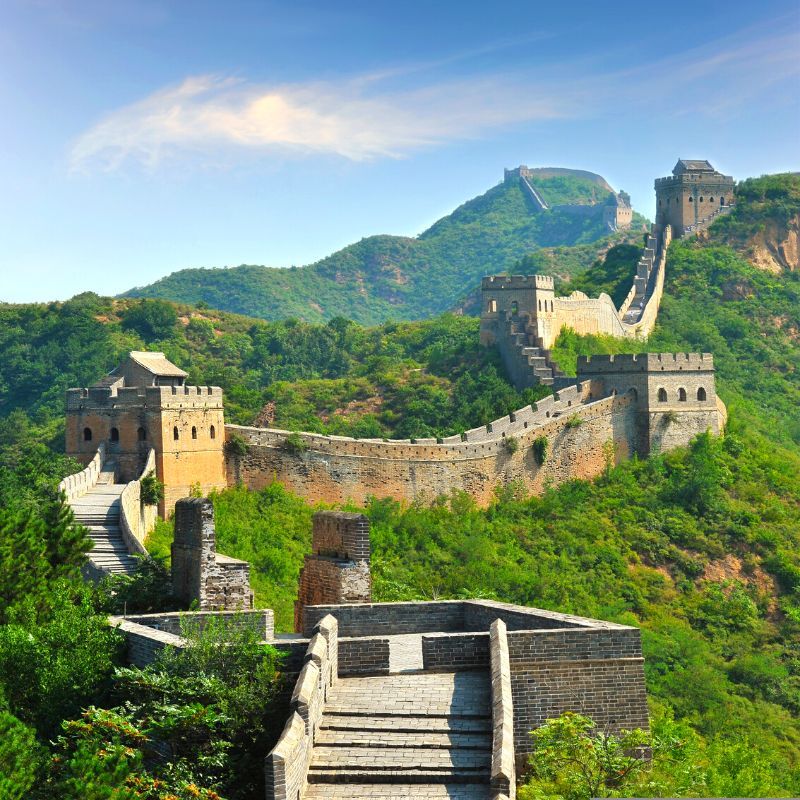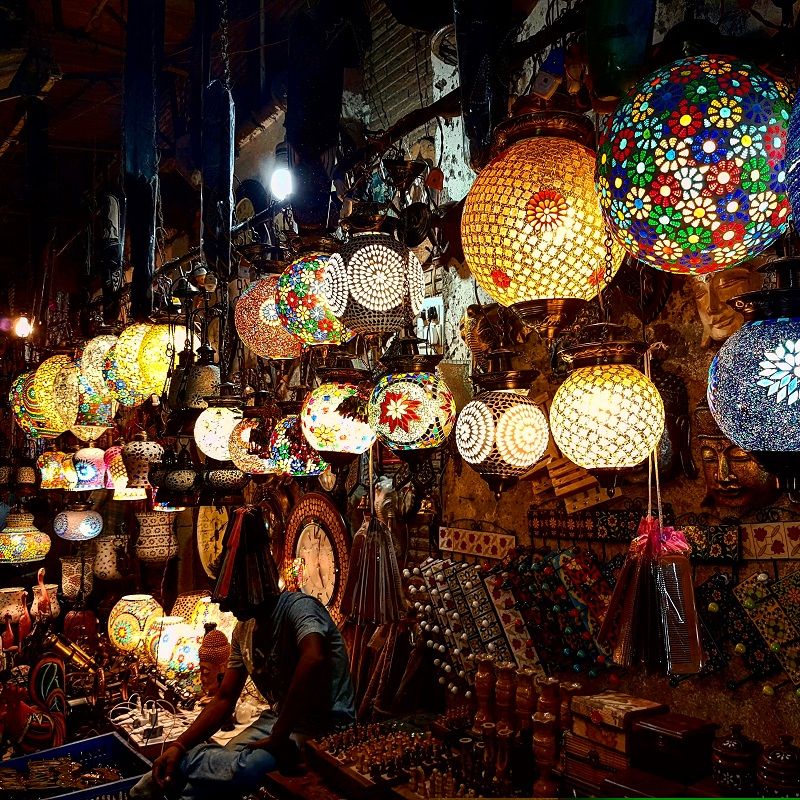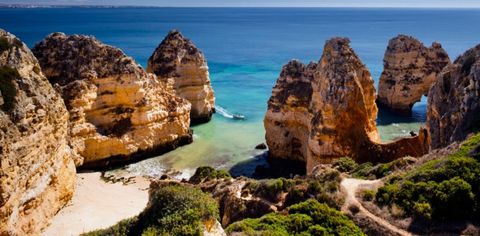
On 3 December 2021, a railway line was opened in the beautiful Southeast Asian country of Laos. The line joined Vientiane to a Laotian border town named Boten, connecting the Laotian capital of Vientiane to Kunming in China thus making the world’s longest train journey possible. By Manas Sen Gupta
Although this railway line seems nothing out of the ordinary, the civic infrastructural achievement is monumental in itself. It not only connects people within the geography on a high-speed railway line but also forms an 18,755-km-long railway network, straddling around 13 nations.
Connecting continents
According to reports, the establishment of the Vientiane-Boten line was the final link in the formation of the longest railway route in the world. A part of China’s Belt and Road Initiative (BRI), the project cost USD 6 billion.
Now, the people in Singapore can travel to Europe by train, for which a journey from Portugal to Southeast Asia would have earlier ended in Vietnam. This was because of no contiguous network extending to Singapore.
However, the COVID-19 pandemic has adversely affected the ease of travel. These days, we cannot just buy a ticket, pick up our backpacks, and head out to our favourite destination anytime. Additionally, we need to adhere to several rules and restrictions, including closed borders, quarantines and suspensions of flights, when other painstaking conditions are met.
But owing to improving conditions across the world, we hope to move around more freely soon. While we wait for such a time, there is no harm in knowing more about the places the railway network connects and the time it might take to complete a journey.
This is probably what inspired curious Reddit users at r/MapPorn to get down to do some math. Thanks to their hard work, we now know some interesting tidbits about the possible travel from Singapore to Lagos in Portugal — the last point on the train route.
The countries that are along the route are Singapore, Malaysia, Thailand, Laos, China, Mongolia, Russia, Belarus, Poland, Germany, France, Spain and Portugal. Time zones change at all points, and intrepid travellers can choose from the many sidebar train journeys along the length of the route.
Among the things to note here is that this is not a journey completed by a single train. Reddit user u/htGoSEVe, who created a map of the longest train journey from Portugal’s Lagos to Singapore, pointed out that travellers will have to change trains at several points.
In some cases, the change may not even happen at the same station but a different one in the same city. Moreover, trains may still be suspended and entire routes may remain closed because of COVID-19. Thus, travellers will have to do their own research before undertaking this journey. (You can read the entire discussion here.)
Additionally, it is unclear how many days the journey might take. According to Mashable, rail expert Mark Smith of seat61.com believes that the trip would take 21 days to complete, including overnight stops, time taken for documentation and rushing from one station to another to catch a connecting train.
Then comes the question of the cost of travel. The price of a train ticket between Beijing and Moscow — the longest section on the Singapore to Portugal train journey — will cost at least USD 744. According to Smith, the total cost of tickets for the entire journey could be around USD 1,400.
Some travellers can opt for longer journeys via a single train. For example, when travelling from Singapore to Bangkok, book a seat in the Eastern & Oriental Express to experience one of the most luxurious travels. The deluxe train is designed for utmost comfort with pullmans, staterooms and presidential suites. Travellers get to enjoy fine dining in dinner cars and relax in its specially designed saloon, lounge, piano bar or observation cars. The train passes through some of the most beautiful landscapes and tourist destinations between the two cities and halts at designated locations where vacationers are given tours.
Seats can be booked here.
In a nutshell, travellers will have to plan according to how they wish to travel the entire distance and be willing to switch trains.
Start of world’s longest train journey
Singapore to Kuala Lumpur
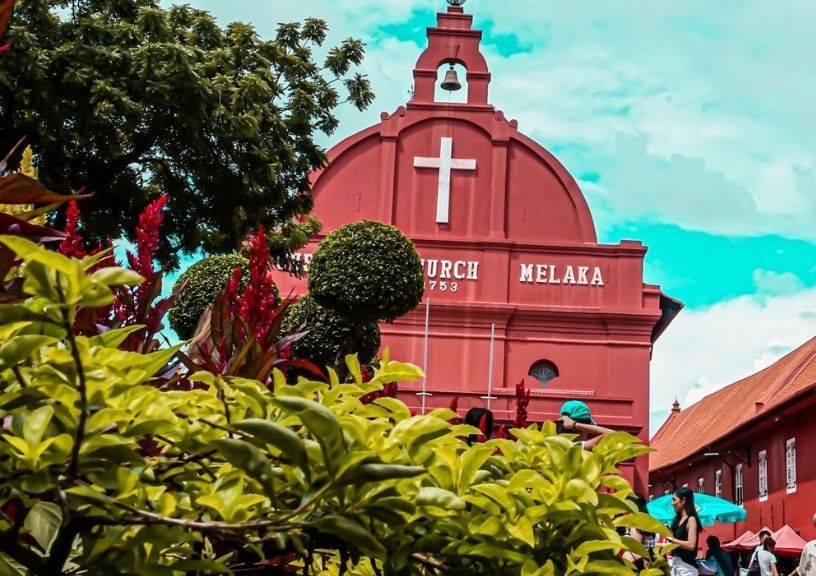
When starting from Singapore to Portugal, travellers should be prepared to change trains along the way. For example, a shuttle train, operated by Malaysia’s national train service, KTM, connects Woodlands Train Checkpoint in Singapore to JB Sentral in Johor Bahru, Malaysia. Tourists will have to disembark at Johor Bahru and change the train for Kuala Lumpur to continue their journey.
Kuala Lumpur is a melting pot of Malay culture and one of the most popular tourist destinations in the world. The bustling marketplaces, culinary delights, historical monuments and iconic buildings, such as the Petronas Twin Towers, are just some things that leave visitors spellbound in the capital city.
Travellers on the way to Kuala Lumpur by train can get off at the Pulau Sebang/Tampin railway station for a trip to nearby Malacca, also known as Melaka. In 2008, Melaka, along with George Town, was inscribed in the UNESCO World Heritage Site list.
Melaka is an Instagram-perfect city, boasting several historic buildings dating back to the Dutch and British eras. A prominent landmark here is the Melaka Sultanate Palace, a replica of the 15th-century palace of Sultan Mansur Shah built as per the detailed notes of the construction of the original palace.
The red-brick Stadthuys is one of the oldest Dutch-era buildings in the region, which serves as another popular landmark of Melaka. Visitors can buy souvenirs at the Jonker Walk night market or take a hike up Bukit China, a hill that has a 17th-century Chinese cemetery — the largest of its kind outside of Mainland China. Chinese temples as well as churches, such as Saint Paul’s Church and the magnificent 18th-century red-brick Christ Church, can be found here.
To Penang
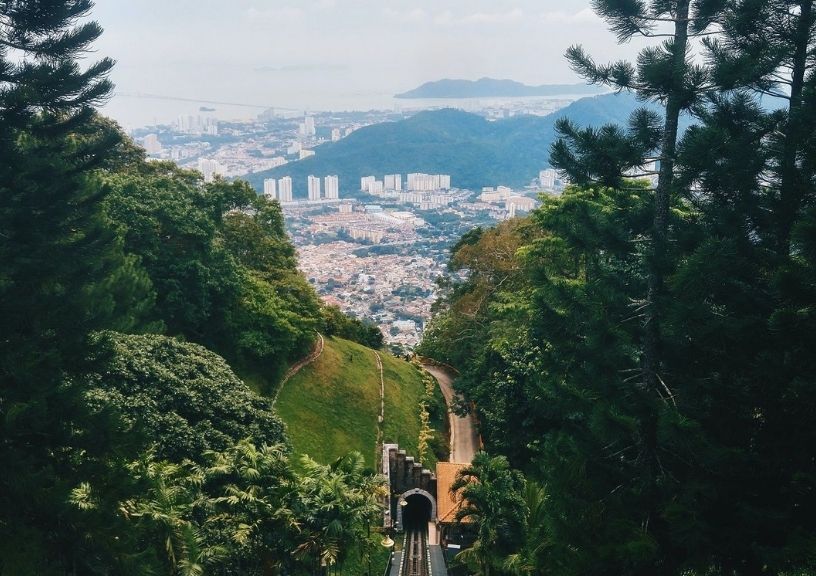
Penang is to the north of Kuala Lumpur, which is where tourists must resume the journey.
George Town, the other city in the UNESCO World Heritage Site list, is the capital of the state of Penang. It is located on the island part of the state and is known for its natural beauty and rich history.
The capital houses several restored and re-adaptive traditional architecture, which reflect the shared Malay, Chinese and Indian ethnicities, along with Eurasian and Siamese that have influenced the place over the centuries. There are 1,700 historic buildings in the city’s core, which measures just 2.5 sq km in area. This means that the entire city can be explored on foot, bicycle or the unique trishaw — a three-wheeled ride pedalled by a driver in the back.
The island is endowed with gardens, hilly forests and granite mountains that rise to a height of 740 metres. One of the must-visit sites is Penang Hill, which offers an enthralling view of the landscape. It can be accessed by a hike through forests or a steep funicular railway, for those who choose comfort or a trek.
Malaysia’s only meromictic lake is in the Penang National Park, one of the world’s smallest forest reserves. The northern part of the island has some of the finest beaches. Batu Ferringhi is a prime beach destination and has several luxury hotels nearby.
Penang is Malaysia’s food capital. Thus, sampling the extraordinary delicacies is a must when in George Town. Cooking styles include the Nyonya and Jawi Peranakan — both of which signify a blend of various cultures that shape the port region. A must-try dish is Penang Assam Laksa, which is made with thick rice noodles in a tamarind and fish soup base in a street stall.
To Padang Besar
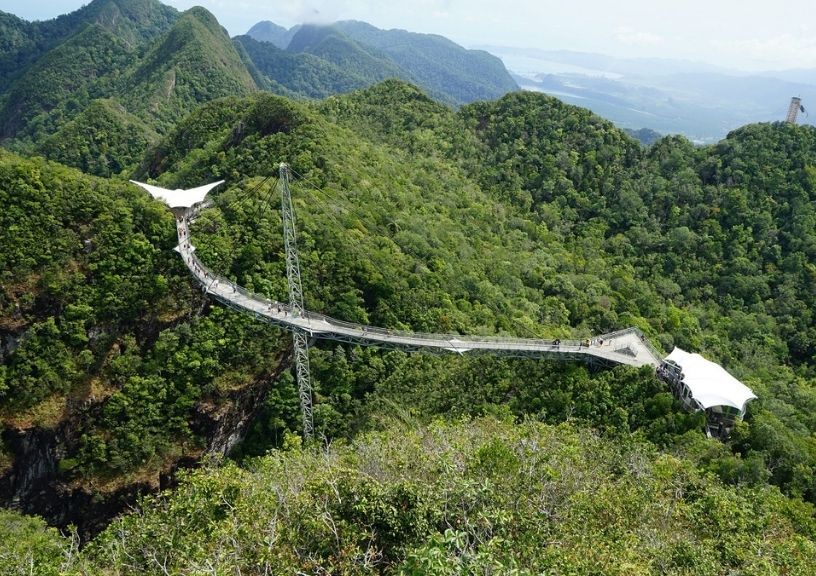
Before reaching the Malaysia-Thai border station Padang Besar (the name is the same on both sides), a quick detour to Langkawi can be taken by a ferry. The archipelago, made up of 99 islands, is one of the most popular holiday destinations in the world.
The tropical paradise is blessed with forested hills and paddy fields, and a walk on the Langkawi Sky Bridge offers a panoramic view from above the rainforests. The pristine beaches and turquoise waters of the Andaman Sea create one of the most picturesque coastlines. Alternatively, boat rides are one of the best ways to appreciate the majestic beauty of the limestone cliffs.
To Bangkok
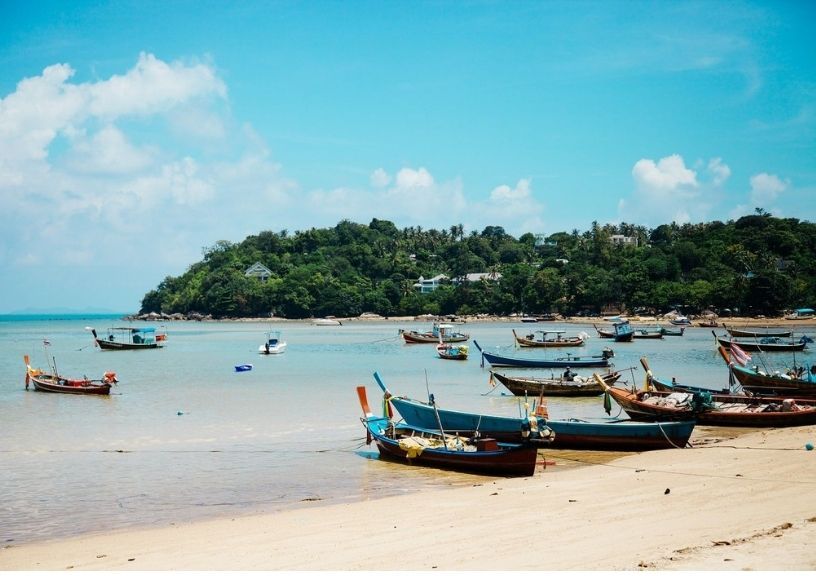
The train route from Pedang Besar to Bangkok passes through cities and towns such as Hat Yai, Surat Thani and Hua Hin. Bangkok is also the last stop of the Eastern & Oriental Express, which starts in Singapore.
Surat Thani can serve as a pit-stop to explore Phuket to its west or Koh Samui to its east. It is Thailand’s biggest island in the Andaman Sea and is dotted with amazing beaches, including Rawai, Karon, Kamala and Mai Khao. There are many Chinese shrines and restaurants that underline the Chinese influence on the island’s cuisine. Additionally, Phuket’s nightlife needs no introduction.
To Phuket’s northeast is the magnificent Ao Phang Nga National Park, whose limestone karst towers and mangrove forest are nurtured by the Andaman Sea. One of the karst towers is renowned as the ‘James Bond Island’, which appeared in the movie The Man with the Golden Gun (1974).
On the other side of the Gulf of Thailand, Koh Samui is an archipelago of over 80 islands, and its waters are perfect for scuba diving. Beaches, such as Chaweng, Taling Ngam and Natien, are ideal for leisurely walks.
Hua Hin is a resort destination, particularly popular among Thai royals. Besides sandy beaches, there are temples, water parks, night markets and numerous fine-dining options. Nearby is the Kaeng Krachan National Park, which is famous for the Pala-U waterfall and its butterfly population.
Bangkok is the capital city of Thailand adorned with architectural marvels that cannot be found anywhere else in Southeast Asia. A visit to the Grand Palace alone unveils magnificent shrines and temples such as Wat Phra Kaeo, which houses the Jade Buddha idol; Wat Pho, or the Temple of the Reclining Buddha; Wat Arun, or the Temple of the Dawn; and Wat Suthat, in front of which is a 27-metre-high structure known as ‘Giant Swing’.
From shopping centres and night markets to fine dining and street food corners, Bangkok has something for all kinds of tourists.
To Vientiane
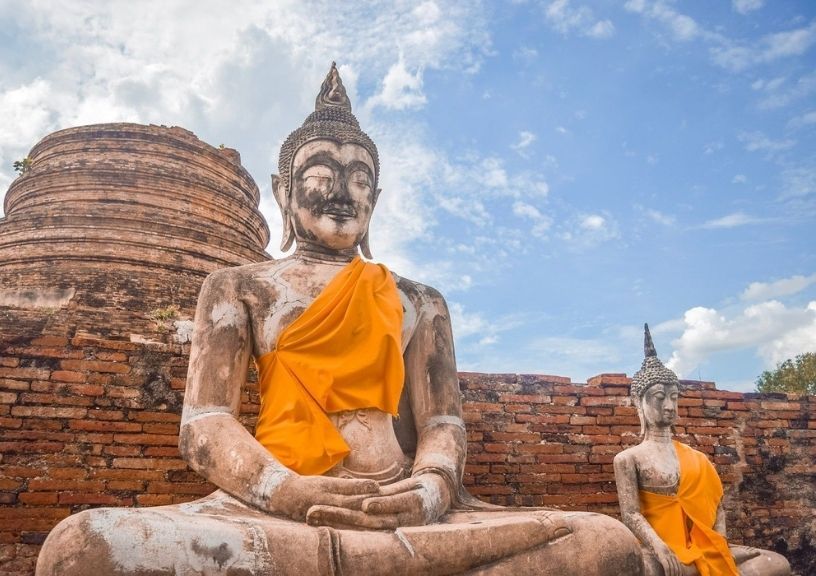
Vientiane is just across the Laos-Thailand border. Thus, any train would end at Nong Khai on the Thai side of the border on River Mekong. Another train service goes across the riverine border into the Thanaleng Railway Station, in the village of Dongphosy near Vientiane. Thanaleng was opened in 2009 and is Laos’ first station connecting the country to neighbouring nations via railway.
Before reaching Nong Khai, travellers can stop at Phra Nakhon Si Ayutthaya. Once the capital of the ancient Kingdom of Ayutthaya, the place transports visitors to a time that was one of the most glorious periods in Thailand’s history. The Phra Nakhon Si Ayutthaya Historical Park, where architectural ruins have been restored, is a UNESCO site.
End the tour of Vientiane with a plate of delicious river prawns and fish with noodles.
To Kunming

Trains with a maximum speed of 160 km/h run on the Chinese-built railway line from Vientiane towards Kunming. The entire journey takes about 10 hours, covering just over 1,000 km.
Between Vientiane and the Boten border intersection, the train passes through the UNESCO World Heritage Site of Luang Prabang.
Luang Prabang is a town surrounded by mountain ranges on a peninsula formed by the River Mekong and River Nam Khan. Ancient Buddhist temples, including the huge Wat Xiengthong and the 16th-century Wat Visounnarth, share the town with French colonial buildings such as the Royal Palace built between 1904 and 1909. Observing monks on their traditional Sai Bat (morning alms) every morning is in itself a spiritual experience.
After crossing over into China at Boten, the train enters the Yunnan province and passes Pu’er — an important tea processing centre. It shares its name with the iconic variety of fermented dark tea, which comes from the ancient trees that grow in the thick forests of Yunnan.
To Beijing

China is known for its high-speed trains. The distance of 2,760 km from Kunming to Beijing can be completed in just around 11 hours. Among the cities on the way are two very important Chinese tourist hubs — Zhengzhou and Changsha.
For the fans of martial arts, Zhengzhou would be the ultimate pilgrimage destination. The Shaolin Temple — immortalised the world over as the birthplace of Shaolin Kung Fu — is located at the foothills of the west side of Mount Songshan in Zhengzhou. A part of the UNESCO World Heritage Historic Monuments of Dengfeng in “The Centre of Heaven and Earth”, the temple draws tourists from around the world to its mystical environment and modern-day monks, busy mastering a style many centuries old. A walk through the peaceful Pagoda Forest might as well help awaken the visitor’s senses to the philosophy of martial arts.
Changsha, on the other hand, is a city of museums. It includes the Hunan Provincial Museum, the Changsha Museum and the Hunan Embroidery Museum. There are also modern-era marvels such as the Changsha Window of the World theme park.
A must-visit place will be the Yuelu Mountain, on top of which is the ancient Yuelu Academy and the Lushan Temple.
While touring the city, travellers can relish classic Hunan cuisine at places such as Pozi Street and Huangxing Pedestrian Street before continuing on the world’s longest train journey.
To Moscow
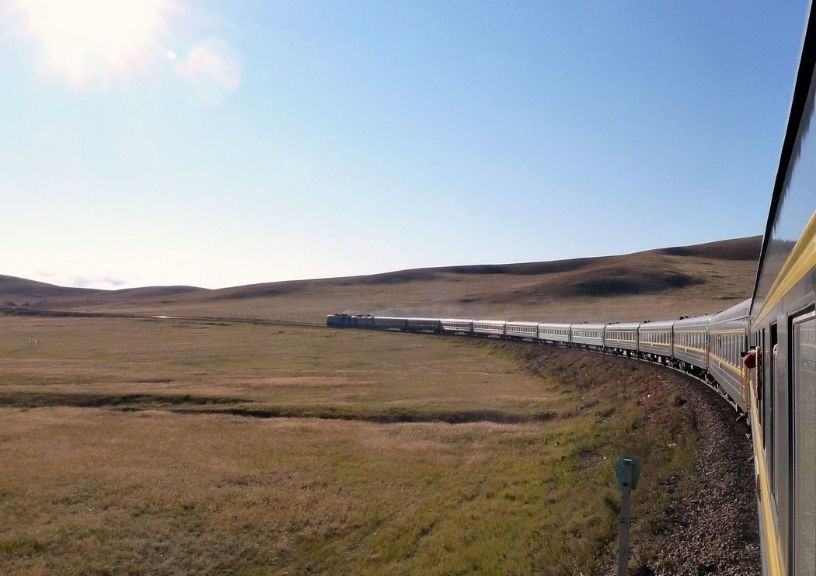
The Beijing and Moscow route is the longest stretch in the entire journey from Singapore to Portugal on this railway route. There are two ways to reach Moscow from Beijing via train. The first is the Trans-Mongolian route, which passes through Ulaanbaatar and covers a distance of 7,620 km to Moscow. The second is the Trans-Manchuria route, which passes through Harbin and takes a longer 8,980 km route to reach the Russian capital.
Both routes, however, connect to the renowned Trans-Siberian railway line for the journey to Moscow. In all, it takes roughly six days to reach Moscow from Beijing aboard a normal train. For those who have time on their hands, the best way to travel this route is to book the finest berth in one of the luxury trains such as the Golden Eagle. It will take 21 days but will turn your journey into a comfortable and plush experience, with tailored tours of all prominent cities and towns along the way.
However, train buffs know that a unique thing about this stretch is not the stops but the view from the train. The Trans-Mongolian and the Trans-Siberian offer some of the most amazing vistas of nature across their entire lengths. Crossing the Gobi Desert on a train is a mesmerising experience. Nothing can come close to watching the sunrise over the vast steppes of the Mongolian landscape from the First-Class compartment of these trains.
Ulaanbaatar is a major stop and is worth a visit for a more personal exploration of the desert or trips to historic buildings such as the Winter Palace of the Bogd Khan. Not to miss is the Beatles Square, a monument with bronze statues of the Fab Four, which serves as a reminder of the days when Mongolian youth would sing songs of freedom during the Communist times.
The next major stop on the world’s longest train journey is Irkutsk in Russia’s Siberia. This is where one can disembark for a trip to Lake Baikal, the deepest and the oldest freshwater lake in the world. As the train moves towards Moscow, it passes through cities such as Krasnoyarsk, Novosibirsk and Ekaterinburg — all of which are renowned for their Soviet-era monuments, religious architecture and traditional Russian culture.
To Paris
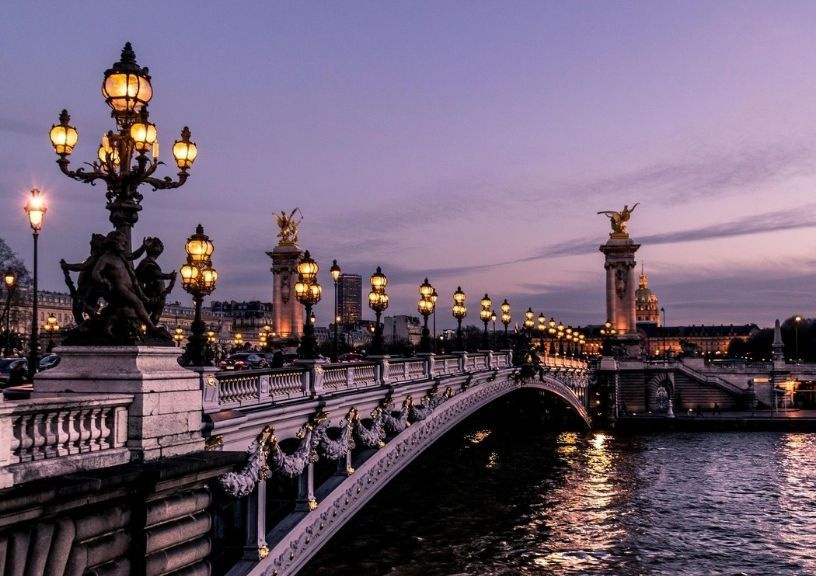
The European leg of mega Singapore to Portugal journey begins in Moscow. From this point onwards, there is a gamut of exceedingly comfortable trains and major tourist destinations at almost every 100 km. The fastest train between Moscow and Paris takes about 35 hours to cover just over 2,500 km.
Get off at Minsk, the Belarusian capital, to taste a slice of Eastern European life. The 15-km-long Independence Avenue, one of Europe’s longest city thoroughfares, has some of Minsk’s most famous attractions. Explore any of the numerous gardens across the city, such as the Mikhailovsky Garden near the railway station or the Victory Park near Lake Komsomolskoye, which has the Isle of Birds wildlife reserve.
When in the Polish capital of Warsaw, tourists head straight for the Old Town — the UNESCO World Heritage Site and one of the most beautiful squares in all of Europe. The Royal Castle is located in Old Town. Others might want to immerse themselves in the music and cultural festivals, held at its numerous outdoor parks or magnificent indoor cultural venues throughout the year.
Then there are the German cities of Berlin, Frankfurt and Karlsruhe. There is no dearth of things to do in these cities.
Berlin is around 800 years old and is dotted with monuments and landmarks that tell its story. Some of the world’s most famous museums are located in Berlin. These include Hamburger Bahnhof, Jewish Museum, Natural History Museum and the Museum Island, which houses a complex of museums. Among the many other places to visit are Charlottenburg Palace, Brandenburg Gate, Berlin Wall and the Baroque style Berlin Cathedral Church. Cruises on the River Spree or a bicycle tour across the city allows visitors to better appreciate the beauty of Berlin, its culture, people and architecture.
Finally, Paris is the destination of choice for millions of tourists across the world. Who wouldn’t want to post pictures of the Eiffel Tower on their Instagram stories? But that’s just a tiny glimpse of Parisian highlights. From museums such as the Musée du Louvre, which houses the world-famous Mona Lisa painting, to numerous Michelin star restaurants serving dishes, Paris has so much to offer that many aspire to spend a lifetime in this city.
To Lisbon via Hendaye

There are two main routes between Paris and Lisbon. While one passes through Bordeaux and Hendaye onwards to the Portuguese capital, the other will take tourists through Barcelona in Spain.
Bordeaux, the wine capital of the world, is to the southern side of France boasting 7,000 winemakers. Additionally, a guided tour is the best way to soak in everything the place offers. The narrow medieval streets and riverside restaurants along the beautiful River Garonne are some places tourists can throng.
Hendaye is a coastal town on the border of Spain, located between the sea and the mountains that crisscross its geography. It is a famous spot for kayaking and dinghy sailing on the waters of the Atlantic Ocean. If interested in exploring Spanish areas along this route, take a detour to Saint-Jean-Pied-de-Port. It is a starting point of the Camino de Santiago pilgrimage trail.
To Lagos
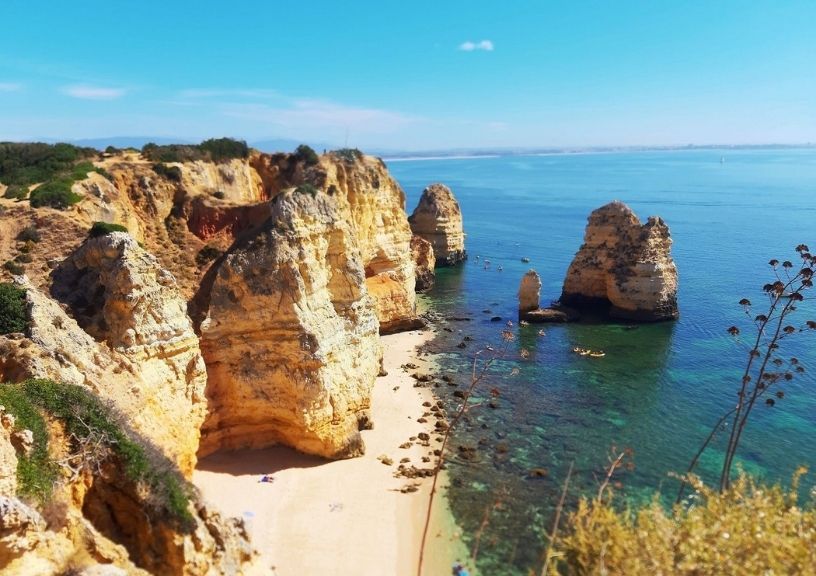
Visit Lisbon’s UNESCO World Heritage Site — the Monastery of the Hieronymites and Tower of Belém. Tour the city’s numerous architectural highlights, which have been influenced by nearly all of Europe’s styles, including Roman, Gothic and Baroque.
Take a trip to the old town of Alfama next to the River Tagus. Located here is Palácio Belmonte, a castle that offers one of the finest luxurious stays in Europe. It is famous for the 59 panels made of more than 3,800 customised tiles installed in the 18th century.
As the final leg, Lagos is in the Algarve region in southern Portugal. It is a historic port town on the Atlantic Ocean, famous for being the launchpad of Portugal’s naval expeditions that ushered in the Age of Discovery centuries ago. Lagos, too, has an old town enclosed inside a 16th-century wall, featuring cobbled lanes, churches and other historic buildings.
This is perhaps the most perfect spot to end the world’s longest train journey. There are beautiful sandy beaches between cliffs, such as the Praia do Camilo, which can be accessed via a staircase that runs down from one of the high rocky points.
Once rested and recharged after the entire journey, those who can’t get enough of trains might embark on Portugal to Singapore return trip.
Related: Turks And Caicos Implements New Testing Protocol — What To Know







